We are all used to wooden furniture: tables, chairs, cabinets. However, there are such types of wood, products from which not every person can afford. Just about such woods we will tell you in our top 5 most expensive types of wood.
5 Zebrano
1 cubic meter of zebrano lumber costs from $6,000. The name "zebrano" is not just similar to the word "zebra". The fact is that this type of wood has a rather unusual color. Light brown and dark brown thin stripes alternate with each other, resembling the color of a zebra. Zebrano wood is very durable. It is used to decorate luxury cars. Luxury shops sometimes choose zebrawood for interior decoration. Sometimes zebrano wood is used as an expensive flooring.
4 Rosewood

1 cubic meter of rosewood wood can cost upwards of $10,000. In nature, this tree grows in Central Africa and on the island of Madagascar. Rosewood wood has a soft texture. The color of the wood is made up of thin stripes. Once upon a time, rosewood wood was used to produce mass-produced furniture. But over time, stocks of rosewood have decreased significantly. Because of this, some manufacturers have begun to paint plywood and chipboard in the colors that rosewood wood has. To date, rosewood is used only to produce veneer.
3 Backout

1 cubic meter of bakout wood has a cost of about 80,000 dollars. In nature, the places where backout trees grow are Haiti, Guatemala, Honduras, Cuba, Puerto Rico, Jamaica. This type of wood is also called "ironwood". Backout differs from other woods in its high resin content. This type of wood is very strong. It is quite resistant to water and heavy loads. In the past, bakout wood was used for shipbuilding. In our time, mass felling of bakout trees is almost never carried out. Today, bakout wood is highly valued by people who create weapons, namely knives - they sometimes use it to make handles. The processed backout wood looks very beautiful. It has an unusual structure and arrangement of fibers. The striped pattern on the polished surface of bakout wood has greenish-brown hues and is quite expressive. If the backout surface is well polished, then in bright light, it is only necessary to turn the product a little, the effect of iridescence (shine) appears on the wood. Backout wood has a noble smell that combines the aroma of cocoa and the smell of incense. Backout resin boasts medicinal properties. It has been used in the past to treat a variety of ailments, including coughs and arthritis. Bakout wood shavings were brewed, creating a kind of medicinal tea.
2 Makassar
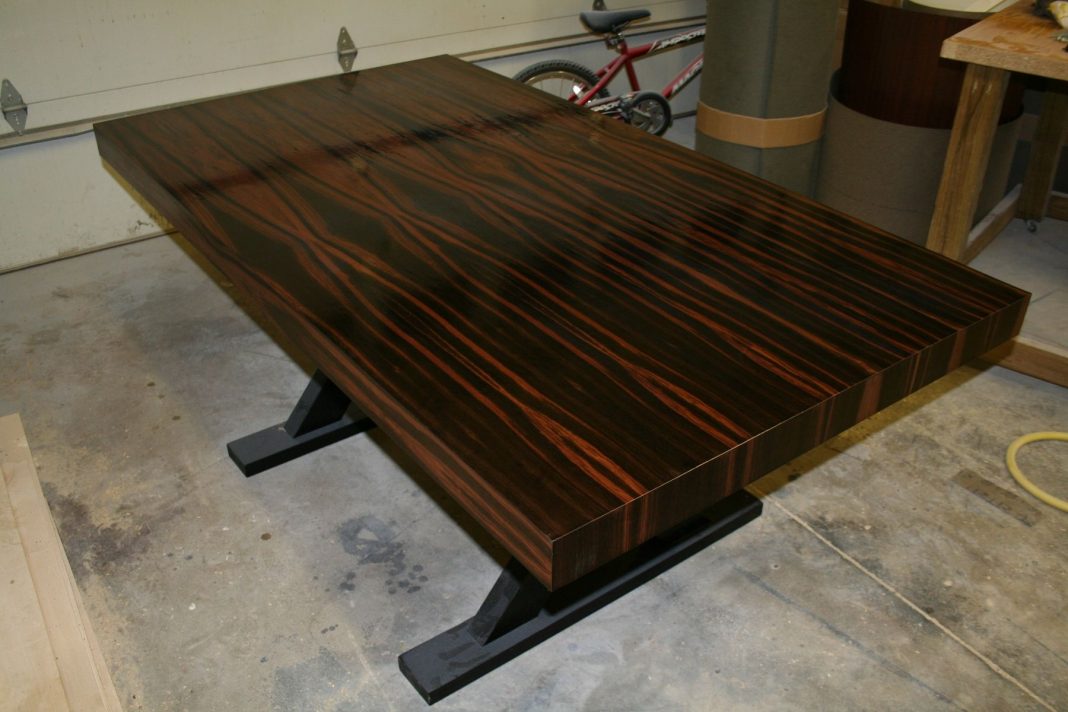
1 cubic meter of Macassar wood has a cost slightly less than $100,000. Macassar is a type of ebony. In nature, the Macassar tree grows in Indonesia. Macassar wood is very durable. After processing, this type of wood has a very refined appearance. The striped texture of macassar wood is unique: no two pieces of this wood are the same. Due to its appearance, this type of wood has a great decorative value. Macassar wood is used to create high-end and chic furniture, as well as for finishing luxurious interiors.
1 Eben
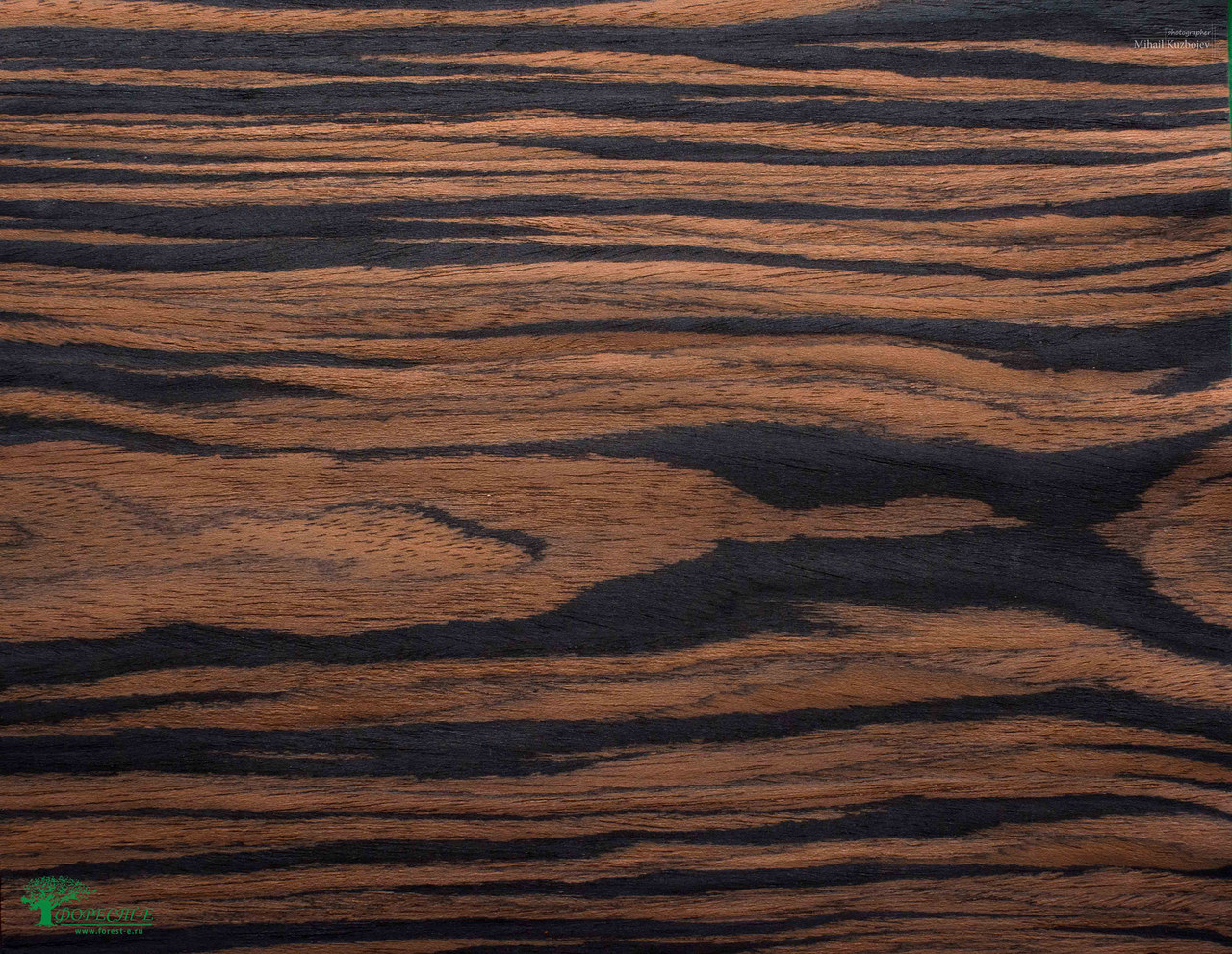
1 cubic meter of ebony wood has a price of $100,000. In nature, the ebony tree grows in southern India, Ceylon and Africa. Appearance the tree is unusual: it looks like a very tall shrub. The height of an ebony tree almost never exceeds 10 meters. The diameter of an ebony tree trunk can reach 1 meter. Now the ebony tree is listed in the Red Book. The felling of each ebony tree is carefully justified and controlled. Among the advantages of this type of wood: good resistance to moisture and ease of processing. The texture of the polished ebony board is very beautiful. A well-polished surface created from ebony wood can have a mirror finish. Ebony wood is black in color and may have streaks. This type of wood is very dense. Ebony wood is never affected by fungi and termites. This wood is used to create luxurious furniture and decorations, used for inlays. Sometimes ebony wood is used for decoration in construction.
Products created from the above types of wood look chic and beautiful.
A simple fisherman Min Kwok from Hong Kong supported his family by fishing and selling his catch in the markets. And nothing foreshadowed that a miracle could happen in his life!
Once the catch nearly put him into a trance, because instead of a fish he pulled a piece of wood out of the nets. But his sadness was short-lived - he saw that a yellow liquid, similar to oil, was flowing from a log. Ming Kwok understood - he got into his network " Gold fish", because it was a huge piece of the Eagle Tree, which is priceless for medicine and perfumery, as it is a source for the manufacture of aromatic substances.
Rybak quickly sold the log for $138 million and became very rich. Now he fishes only for his own pleasure from his own boat, which leaves every day from his own pier, which is built near his own third villa on the ocean.
What is this very "Eagle tree"? ..
Yes, this is Agar tree (other names are aloe tree, paradise tree, eagle tree, agar, agar, oud, oud, kalambak), Aquilária, grows in tropical forests Southeast Asia, the most valuable tree, heads a family of only 16 trees found in the world. Most of these trees have disappeared because they were destroyed in order to obtain essential oils. The average life expectancy of aquilaria is 70-100 years, it grows in humid tropical regions with an abundance of rain.
This is a large evergreen tree from which aromatic material has been extracted for many centuries. The dark, viscous core of the tree is used. At the beginning of a tree's life, the heartwood is light and light, but the climate and special microorganisms transform it into a unique natural aromatic substance.
Agarwood is obtained from special plantations in the jungle. The resulting wood, after drying, can be immediately used for fumigating rooms, as incense, or as a raw material for obtaining agar oil.
Aquilaria and, accordingly, agar oil is produced and grown only in Southeast Asia and imported to Arab countries by wholesalers and perfume companies. Agar oil is the result of the complex defense mechanism of the aloe tree. After a tree is infected with a fungus, it begins to produce resin, which "ripens" impregnates the trunk and forms such valuable wood. This process takes from several decades to hundreds of years.
The oil is valued in perfumery, as it is a strong fixative, in small doses it is included in the formulations of exquisite oriental perfumes. The aroma of the scarlet tree takes about 12 hours to open, on the skin the aroma can last more than a day. It is especially valued in the perfumery of Arab sheikhs and sultans. The aroma is strong, sweet-woody, almost balsamic, similar to the smell of styrax, vetiver, sweetness reminiscent of sandalwood.
Aroma of wood oil agarwood(Oud tree), belongs to the group of aphrodisiacs and has a very high cost (more expensive than gold). Obtaining this oil is an ancient process that has been kept secret for thousands of years. Oriental fragrances with oud tree oil are old recipe, known to a small circle of initiates.
Based on this aphrodisiac, expensive drugs are made for the treatment of sexual impotence. The substances contained in the oil are able to restore the disturbed balance of the female sex hormone estrogen, which improves the general physical and spiritual condition of the woman and helps to get rid of frigidity. . It has a pronounced ability to rejuvenate the body. This is an oncologist oil, it eliminates energy neoplasms caused by the adoption of incorrect life attitudes; restores the aura, protects from the effects of the aggressive energy of the outside world. The oil supports the positive effects of deloading exercises and meditation and promotes the development of the imagination.
The botanical name Aloexylon Agallochum comes from the Greek aloe, and xylon can be assumed to mean "a tree that tastes of aloe". Obviously, when the eagle tree came to Europe, its bitter-astringent taste was the determining factor. In the Bible it is mentioned in Numbers XXIV, 6; in Song of Songs IV,14 under the name "Stacti"; is. Sirach XXIV; Psalt. XLIV,9. In the book of Exodus, the Lord showed Moses a tree, which he threw into the bitter waters of Marah, from which they became sweet. (Exodus 15.25)
The reliability of this legend from the Bible is confirmed by the fact that the Arabs corrected the taste of water with a piece of scarlet tree. This was especially important for travelers. Avicenna wrote that merchants and travelers suffer from nothing more than from a change in water; to correct its taste, you need to put a little clay taken near your house and a piece of scarlet tree into it.
In the fifties, they tried to grow aloe north of Nepal in India, the tree grew well, but the desired product did not form in it, then the necessary insects living on this tree were brought in, but the insects, unfortunately, did not get along in the new climate. So scarlet trees stand, but there are no precious fragrant pieces in their wood.
In fact, agar oil is the result of a tree disease. It is formed as a protective reaction to a fungal or bacterial infection. Attacked trees begin to secrete a protective resin that accumulates in the affected areas (roots, branches, parts of the trunk). Gradually, the resin literally impregnates the wood, becoming harder and harder and acquiring a dark brown, sometimes almost black color. At the same time, the core of Aquilaria (the central part of the tree, darker and older than the sapwood) is the most vulnerable to infection. It is for this reason that it is often necessary to destroy the entire tree in order to obtain oil, although it would be more profitable to cut only the infected parts of it.
Agarwood is exported in various forms (wood chips, powder, oil, as well as finished products such as perfumes, aromatics and medicines). The main importers of oud are the countries of the Middle and Far East, in particular the United Arab Emirates and Saudi Arabia(where agarwood is known as oudh), as well as Hong Kong, Taiwan and Japan.
Receiving methods.
There are three methods for producing oud oil, namely hydro-distillation, steam distillation and supercritical CO2 extraction. The first two are the most common. An important factor affecting the final product (oil) is the age of the tree. Older trees have, firstly, a higher resin content, and secondly, like wine, their resin improves with age. Speaking about the classification of Agarwood oil, it must also be said that the highest quality is obtained during the first distillation. After each subsequent distillation of wood, the quality of the oil decreases.
Oil obtained by hydro-distillation is valued higher than that obtained by steam distillation. According to experts, the latter lacks the voluminous smoky nuances that come with hydro-distillation. In both methods, the resulting oil is filtered, exposed to the sun and aged for some time. The longer the extract of the oil, the better its flavor will be.
When are synthetic substitutes needed?
The need to develop synthetic substitutes (analogues) usually arises when regular supplies of natural raw materials in required quantities inaccessible and/or expensive. For the situation with oud, this is very important. And because the perfume industry is already actively using its chemical counterparts. Due to their cheapness, they have occupied a significant in terms of volume, although the least profitable segment of the market. It is worth noting that these analogues actually did not even come close to the imitated natural product. The main chemical components responsible for the characteristic aroma of oud, sesquiterpenes, can in principle be synthesized. However, it is very difficult and expensive to synthesize them, which makes the process completely unattractive commercially.
Thus, the aroma of natural oud oil is very easy to distinguish from its synthetic counterparts. Real oud smells magical - full of smoky, woody and balsamic shades, a warm aura with sweet and sour nuances. Synthetic oud smells simply - it is a woody-leather scent that lacks volume and play of shades.
Why is oud so expensive?
Low yield of oil from vegetable raw materials, the complexity of the extraction process and the lack of natural sources- these are the main reasons for the high cost of oud. The wood used to make the oil has a low resin content and typically requires a minimum of 20 kg of wood to make 12 ml of oil. 100 years. This, of course, does not mean that young trees do not give a good aroma, but this is not quite the same level of quality, heritage and tradition. However, sales of oud-based perfumes continue to grow every year, and in order to meet demand, many perfumers have begun to use a mixture of natural and synthetic oud in their compositions.
Abdulla Ajmal, the director of Ajmal Perfumes, estimated that around 20 years ago a kilo of high-quality E-class oud cost about $225.
Now the same amount of raw material will cost about $ 1,500. This is a staggering increase in prices. For those willing to spend more, the highest quality oud is available at $24,950 per kilo. But Mr. Ajmal says profit margins are slim at that price. (New York Times).
Now the average price per kg on the market is about 18,000 euros. This raw material is mainly used in natural perfumery to increase the persistence and intensity of perfumes.
Another reason for the high cost of agar is that Aquilaria is now endangered. The most important Aquilaria species for fishing are A. agollocha, A. malaccensis and A. crassna. A. malaccensis is protected worldwide by CITES (Convention on International Trade in Species of Wild Fauna and Flora) as well as by IUCN (World Conservation Union). A. crassna was listed as an endangered and protected species several years ago by the Vietnamese government.
The use of oud.
An important use of oud is in the production of incense. Agar is considered an aphrodisiac, both in the form of oil and incense. Oud oil is often sold in Vietnamese pharmacies. Chinese medicine uses Aquilaria powder to treat liver cirrhosis, lung and stomach diseases.
A simple fisherman Min Kwok from Hong Kong supported his family by fishing and selling his catch in the markets. And nothing foreshadowed that a miracle could happen in his life! Once the catch nearly put him into a trance, because instead of a fish he pulled a piece of wood out of the nets. But his sadness was short-lived - he saw that a yellow liquid, similar to oil, was flowing from a log. Ming Kwok realized that "Golden Fish" got into his net, because it was a huge piece of "Eagle Tree", which is priceless for medicine and perfumery, as it is a source for the manufacture of aromatic substances.
Rybak quickly sold the log for $138 million and became very rich. Now he fishes only for his own pleasure from his own boat, which leaves every day from his own pier, which is built near his own third villa on the ocean.
So what is this "Eagle Tree" and why is it so expensive? Let's find out...

Yes, this is Agarwood (other names are aloe tree, paradise tree, eagle tree, agar, agar, oud, oud, kalambak), Aquilaria (Aquilária), grows in the tropical forests of Southeast Asia, the most valuable tree, heads the family of everything 16 trees found in the world. Most of these trees have disappeared because they were destroyed to obtain essential oils. The average life expectancy of aquilaria is 70-100 years, it grows in humid tropical regions with an abundance of rain.
This is a large evergreen tree from which aromatic material has been extracted for many centuries. The dark, viscous core of the tree is used. At the beginning of a tree's life, the heartwood is light and light, but the climate and special microorganisms transform it into a unique natural aromatic substance.
Agarwood is obtained from special plantations in the jungle. The resulting wood, after drying, can be immediately used for fumigating rooms, as incense, or as a raw material for obtaining agar oil.
Aquilaria and, accordingly, agar oil is produced and grown only in Southeast Asia and imported to Arab countries by wholesalers and perfume companies. Agar oil is the result of the complex defense mechanism of the aloe tree. After a tree is infected with a fungus, it begins to produce resin, which "ripens" impregnates the trunk and forms such valuable wood. This process takes from several decades to hundreds of years.
The oil is valued in perfumery, as it is a strong fixative, in small doses it is included in the formulations of exquisite oriental perfumes. The aroma of the scarlet tree takes about 12 hours to open, on the skin the aroma can last more than a day. It is especially valued in the perfumery of Arab sheikhs and sultans. The aroma is strong, sweet-woody, almost balsamic, similar to the smell of styrax, vetiver, sweetness reminiscent of sandalwood.
The aroma of agar wood oil (Oud tree), belongs to the group of aphrodisiacs and has a very high cost (more expensive than gold). Obtaining this oil is an ancient process that has been kept secret for thousands of years. Oriental fragrances with oud tree oil is an old recipe known to a small circle of insiders.
Based on this aphrodisiac, expensive drugs are made for the treatment of sexual impotence. The substances contained in the oil are able to restore the disturbed balance of the female sex hormone estrogen, which improves the general physical and spiritual condition of the woman and helps to get rid of frigidity. . It has a pronounced ability to rejuvenate the body. This is an oncologist oil, it eliminates energy neoplasms caused by the adoption of incorrect life attitudes; restores the aura, protects from the effects of the aggressive energy of the outside world. The oil supports the positive effects of deloading exercises and meditation and promotes the development of the imagination.

The botanical name Aloexylon Agallochum comes from the Greek aloe, and xylon can be assumed to mean "a tree that tastes of aloe". Obviously, when the eagle tree came to Europe, its bitter-astringent taste was the determining factor. In the Bible it is mentioned in Numbers XXIV, 6; in Song of Songs IV,14 under the name "Stacti"; is. Sirach XXIV; Psalt. XLIV,9. In the book of Exodus, the Lord showed Moses a tree, which he threw into the bitter waters of Marah, from which they became sweet. (Exodus 15.25)
The reliability of this legend from the Bible is confirmed by the fact that the Arabs corrected the taste of water with a piece of scarlet tree. This was especially important for travelers. Avicenna wrote that merchants and travelers suffer from nothing more than from a change in water; to correct its taste, you need to put a little clay taken near your house and a piece of scarlet tree into it.
In the fifties, they tried to grow aloe north of Nepal in India, the tree grew well, but the desired product did not form in it, then the necessary insects living on this tree were brought in, but the insects, unfortunately, did not get along in the new climate. So scarlet trees stand, but there are no precious fragrant pieces in their wood.

In fact, agar oil is the result of a tree disease. It is formed as a protective reaction to a fungal or bacterial infection. Attacked trees begin to secrete a protective resin that accumulates in the affected areas (roots, branches, parts of the trunk). Gradually, the resin literally impregnates the wood, becoming harder and harder and acquiring a dark brown, sometimes almost black color. At the same time, the core of Aquilaria (the central part of the tree, darker and older than the sapwood) is the most vulnerable to infection. It is for this reason that it is often necessary to destroy the entire tree in order to obtain oil, although it would be more profitable to cut only the infected parts of it.
Agarwood is exported in various forms (wood chips, powder, oil, as well as finished products such as perfumes, aromatics and medicines). The main importers of oud are the countries of the Middle and Far East, in particular the United Arab Emirates and Saudi Arabia (where agarwood is known as oudh), as well as Hong Kong, Taiwan and Japan.
Receiving methods.
There are three methods for producing oud oil, namely hydro-distillation, steam distillation and supercritical CO2 extraction. The first two are the most common. An important factor affecting the final product (oil) is the age of the tree. Older trees have, firstly, a higher resin content, and secondly, like wine, their resin improves with age. Speaking about the classification of Agarwood oil, it must also be said that the highest quality is obtained during the first distillation. After each subsequent distillation of wood, the quality of the oil decreases.
Oil obtained by hydro-distillation is valued higher than that obtained by steam distillation. According to experts, the latter lacks the voluminous smoky nuances that come with hydro-distillation. In both methods, the resulting oil is filtered, exposed to the sun and aged for some time. The longer the extract of the oil, the better its flavor will be.
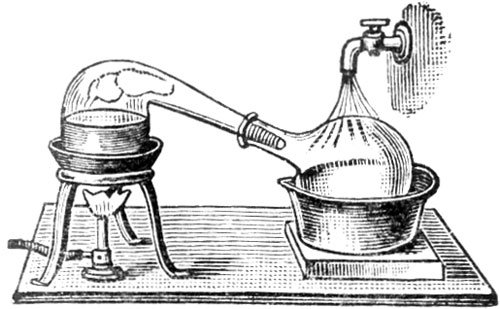
When are synthetic substitutes needed?
The need to develop synthetic substitutes (analogues) usually arises when regular supplies of natural raw materials in the required quantities are not available and/or expensive. For the situation with oud, this is very important. And because the perfume industry is already actively using its chemical counterparts. Due to their cheapness, they have occupied a significant in terms of volume, although the least profitable segment of the market. It is worth noting that these analogues actually did not even come close to the imitated natural product. The main chemical components responsible for the characteristic aroma of oud, sesquiterpenes, can in principle be synthesized. However, it is very difficult and expensive to synthesize them, which makes the process completely unattractive commercially.
Thus, the aroma of natural oud oil is very easy to distinguish from its synthetic counterparts. Real oud smells magical - full of smoky, woody and balsamic shades, a warm aura with sweet and sour nuances. Synthetic oud smells simply - it is a woody-leather scent that lacks volume and play of shades.
Why is oud so expensive?

The low yield of oil from vegetable raw materials, the complexity of the extraction process and the lack of natural sources are the main reasons for the high cost of oud. The wood used to make the oil has a low resin content and typically requires a minimum of 20 kg of wood to make 12 ml of oil. 100 years. This, of course, does not mean that young trees do not give a good aroma, but this is not quite the same level of quality, heritage and tradition. However, sales of oud-based perfumes continue to grow every year, and in order to meet demand, many perfumers have begun to use a mixture of natural and synthetic oud in their compositions.

Abdulla Ajmal, the director of Ajmal Perfumes, estimated that around 20 years ago a kilo of high-quality E-class oud cost about $225.

Now the same amount of raw material will cost about $ 1,500. This is a staggering increase in prices. For those willing to spend more, the highest quality oud is available - $24,950 per kilo. But Mr. Ajmal says profit margins are slim at that price. (New York Times).
Now the average price per kg on the market is about 18,000 euros. This raw material is mainly used in natural perfumery - to increase the durability and intensity of perfumes.

Another reason for the high cost of agar is that Aquilaria is now endangered. The most important Aquilaria species for fishing are A. agollocha, A. malaccensis and A. crassna. A. malaccensis is protected worldwide by CITES (Convention on International Trade in Species of Wild Fauna and Flora) as well as by IUCN (World Conservation Union). A. crassna was listed as an endangered and protected species several years ago by the Vietnamese government.
The use of oud.
An important use of oud is in the production of incense. Agar is considered an aphrodisiac, both in the form of oil and incense. Oud oil is often sold in Vietnamese pharmacies. Chinese medicine uses Aquilaria powder to treat liver cirrhosis, lung and stomach diseases.
Grenadil (African ebony) - $10,000 per kilo
This type of wood is one of the most expensive on the planet. African ebony wood is mainly used for making musical instruments. However, this is now an endangered species of trees and they are found in the world less and less.
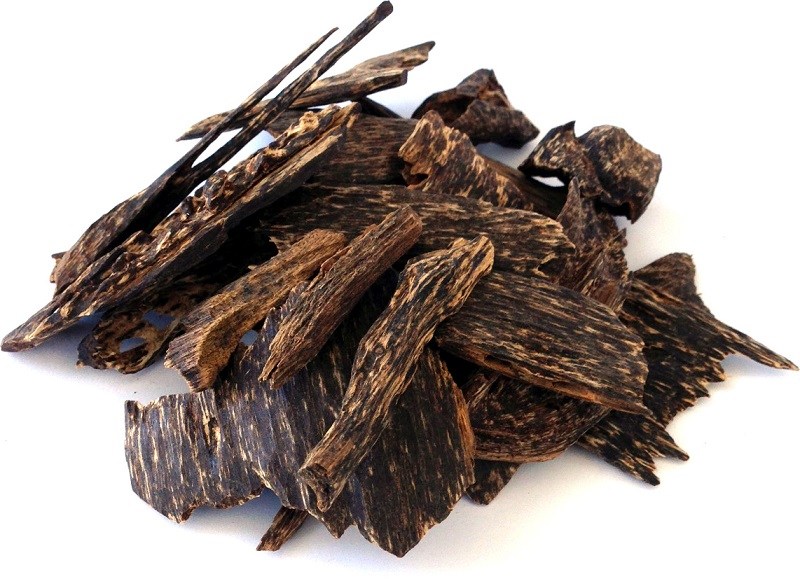
Agar - $10,000 per kilo
The Agar tree belongs to the tree species with a dark core. Agar has been around for over 3,000 years and is used to produce a natural oil with a special flavor. The demand for this type of wood is growing, making it an expensive commodity.
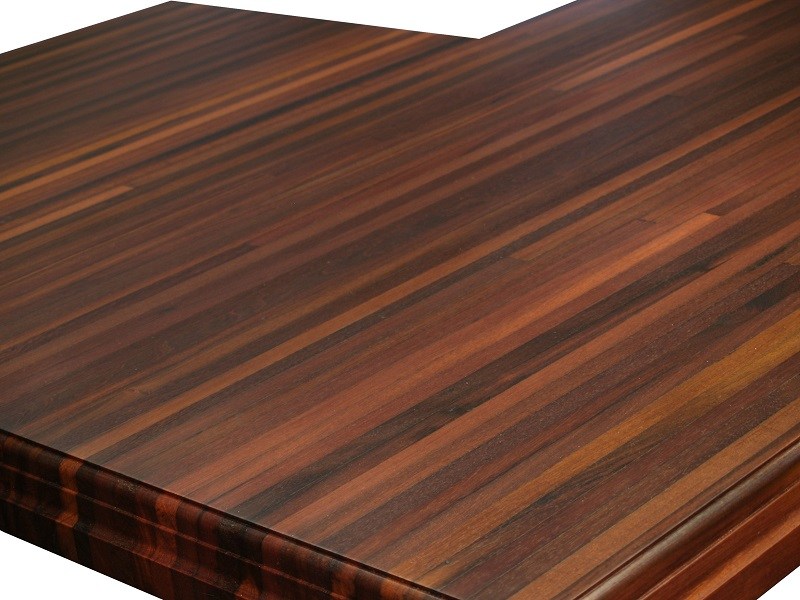
Ebony - $10,000 per kilo
Diospyros wood or ebony is quite thick and does not absorb water well. In addition, it is known for its use in the construction of pianos, cellos, fretboards, violins, bows, harpsichords and other musical instruments.

Sandalwood - $20,000 per kilo
Sandalwood is known as an aromatic wood that is one of the most expensive in the world. This unique tree produces several natural oils that belong to the sandalwood family. Sandalwood is also unique in that it is able to retain fragrance for many years.

Pink Ivory or Umnini - $7-8 per board foot (0.00236 cubic meters)
This type of African tree is also popular under the name Red Cat. Pink ivory grows intensively in Zimbabwe, South Africa and Mozambique. Basically, the Pink Ivory tree itself is used for the production of billiard cues, knife handles and other medicinal purposes.
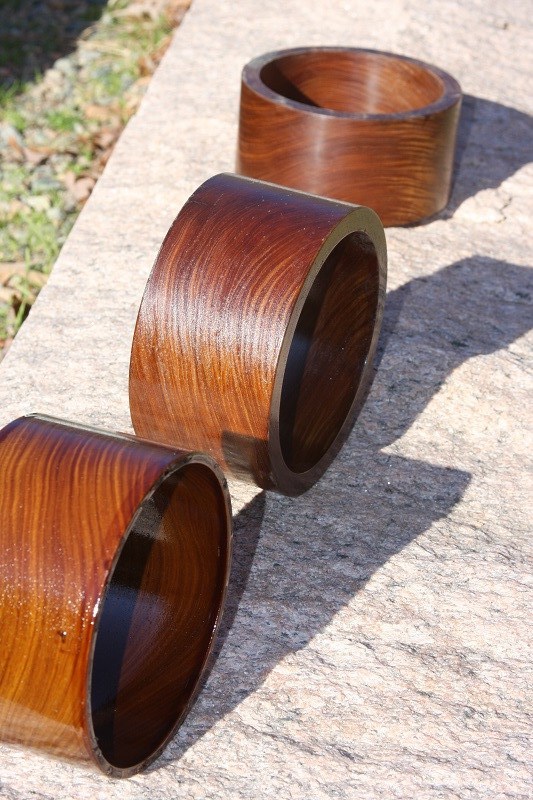
Backout - $5 per board foot (0.00236 cubic meters)
The backout is also known as the tree of life. It belongs to the genus Lignum Kuaiakum and is mainly grown on the northern coastline of South America and the Caribbean. Wood is one of the most expensive in the world due to its strength, hardness and density.

Amaranth (Purple Heart) - $11.99 per board foot (0.00236 cubic meters)
One of the most unique types of colored woods is Amaranth. The tree is one of the most valuable in the world, and grows in 13 different types in the humid and warm regions of South and Central America.

Dalbergia - $14-16 per board foot (0.00236 cubic meters)
This type of wood belongs to the Albertina family, which grow to small to medium sized trees. This type of tree grows in warm regions of South and Central America.
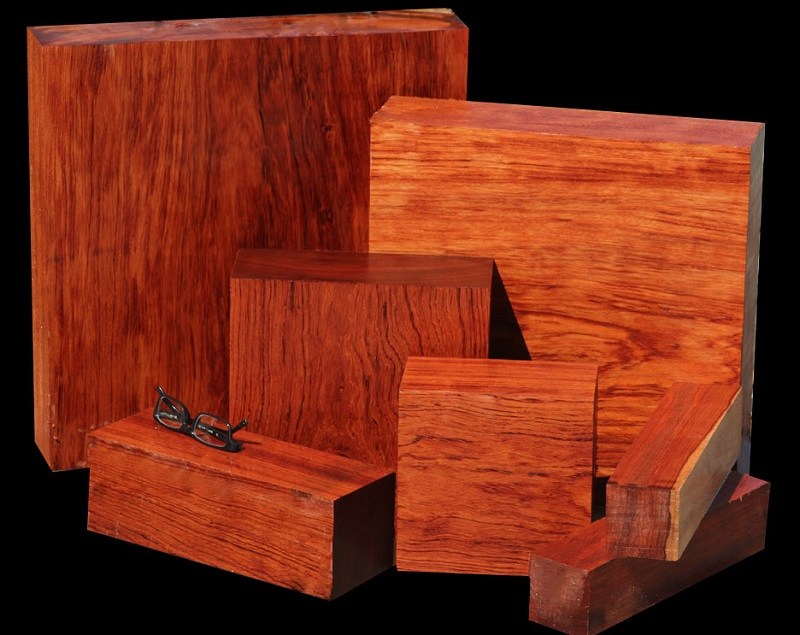
Bubinga - $18.99 per board foot (0.00236 cubic meters)
Bubinga is one of the most expensive woods in the world. The tree itself is a flowering plant belonging to the Fabacheae Bubinga family. In addition to being one of the most expensive woods, it is also the most valuable wood. It grows in flooded forests and marshy places.
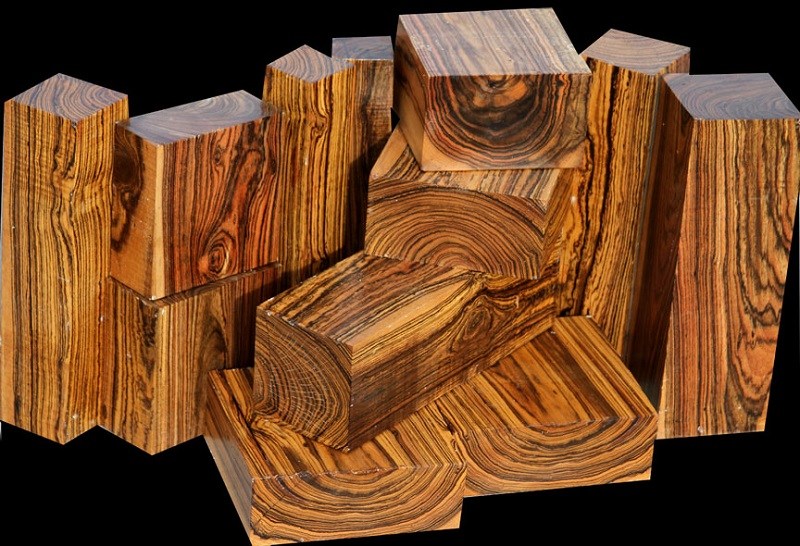
Bokota - $32.99 per board foot (0.00236 cubic meters)
The most expensive wood on our list is Bokota, which is very related to Cordia. Due to the huge demand for this wood, it has become the most expensive wood that can be bought on our planet. This tree is only native to a few areas in the Caribbean, Mexico and Central America.









